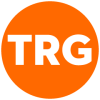Measurement Tactics: Improving Messaging & Engagement

In a crowded online space, social media posts require targeted messaging and visuals to reach and engage your desired audience. In order to gain traction with consumers, brands must understand what motivates and influences them, and produce content that is helpful and relatable. By utilizing measurement tools, brands can get a better sense of what drives engagement and action in their community, and help reach their organization’s goals.
This article will demonstrate how to incorporate social media measurement tactics to test and improve your content, leading to a more successful social media strategy.
Set your goals: In order to be successful on social media, it is important to set specific goals to lead your efforts. First, determine who your target audience is—whether that is women 45+ who experience chronic pain, or adults over 30 who have experienced Alzheimer’s in their family. Next, figure out what social media networks this audience is active on—you want to create a channel of communication where your audience is already engaged.
At the start of 2016, Facebook had 1.59 billion monthly active users—which is more than 20 percent of the global population. Facebook has become a major content discovery platform. According to recent data published by traffic analytics firm Parse.ly, more traffic to news and media sites is driven by Facebook than Google. This means that people are often finding content in their Facebook feed and clicking through to articles directly from their feeds.

After discovering where your audience spends their time on social, figure out what actions you want your audience to take. Is your ultimate goal to drive people to sign up for research studies or to your website to learn more information about your cause? Reversely, what can you provide your audience to better reach their goals? How will following your page benefit them?
Implement your content strategy: Figuring out the best content to share on your social channels starts as an experiment. You won’t be able to determine what works best with your audience until you test out different messages and apply measurement to the results. As you brainstorm content to share, figure out several different categories of content that may be relevant to your audience.
Erin Hildreth, Senior Manager of Marketing and Communications at The Vision Council, shares how social media plays a role in her organization: “Social media has personified all of our campaigns, and the sheer reach of one interaction has the power to grow your message exponentially. It is something that we think about constantly when preparing our campaigns because it is a way to truly touch people as they go about their days and live their lives.”
Test your content and optimize: Facebook and Twitter offer very in-depth insights for organic and paid posts. It is important to review your page analytics often to note trends and see which categories of content are performing best. Here are a couple things to look for:
- What day of the week and what time of day is your content getting the most engagement (likes, comments, shares, retweets, favorites, replies)?
- What types of content are eliciting the most comments? Are these all positive comments?
- When promoting your organization, what messaging works best with your audience?
- What types of links are receiving the most clicks?
- What types of images or graphics seem most eye-catching/appealing to your audience (based on the engagement)
Another measurement tool that often comes in handy is Google Analytics. Aside from seeing how much traffic is coming to your site from social each week, you can set specific goals on Google Analytics that will allow you to see when consumers from social complete a certain action on your website. By pulling weekly analytics reports, you can see what aspects of your content strategy are contributing to your bottom line.
Measuring success: In order to show your results and improvement on social media to others within your organization, it is important to do monthly or quarterly dashboards that highlight your growth. I’ve found that showing the percent change in followers, engagement and/or impressions is a strong way show success—for example, “Since January 2016, we’ve increased engagement on the page by 123%.” Another important metric to share will be goals completed through social media on Google Analytics.
Stacy Mowery, Director of Brand Development at Banner Health shares, “Measuring our social media analytics helps us understand our message reach: Who are we reaching? Who is most interested in our content? The metrics can also help us understand which topics or types of posts are most engaging to our audiences. A few years ago we began studying the differences in engagement between heavy visual posts vs. posts with just written content. The data showed visual posts are clearly more engaging, so we now have shifted to a heavy visual social strategy.”
Thinking strategically about your online goals and always staying up to speed on the latest social trends, changing algorithms and measurement tools is key to having a successful approach across your social platforms.
This is an excerpt of an article originally published in the PR News Writer’s Guidebook.




